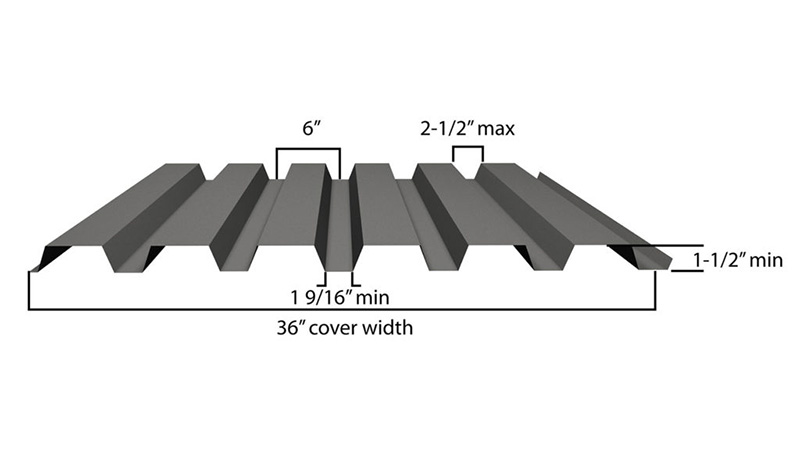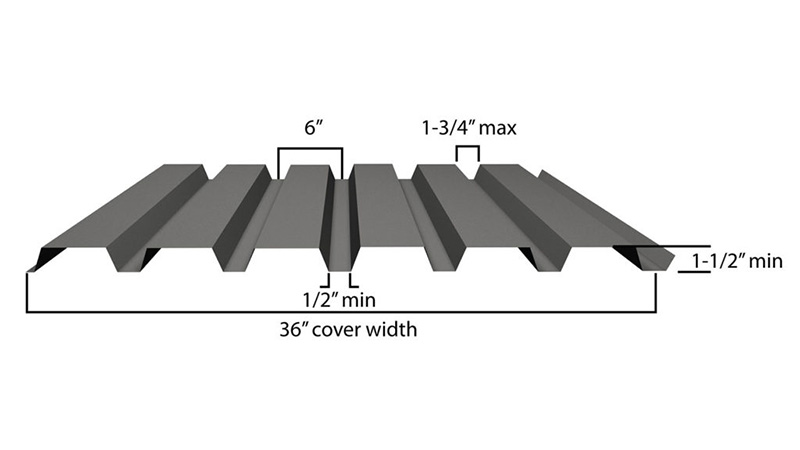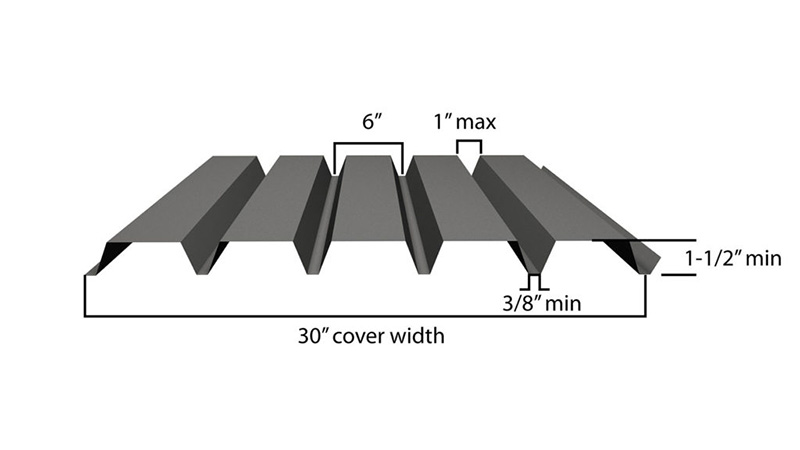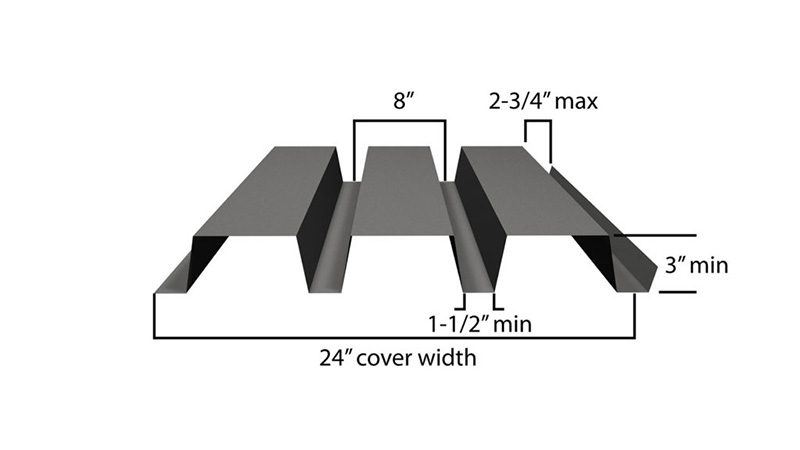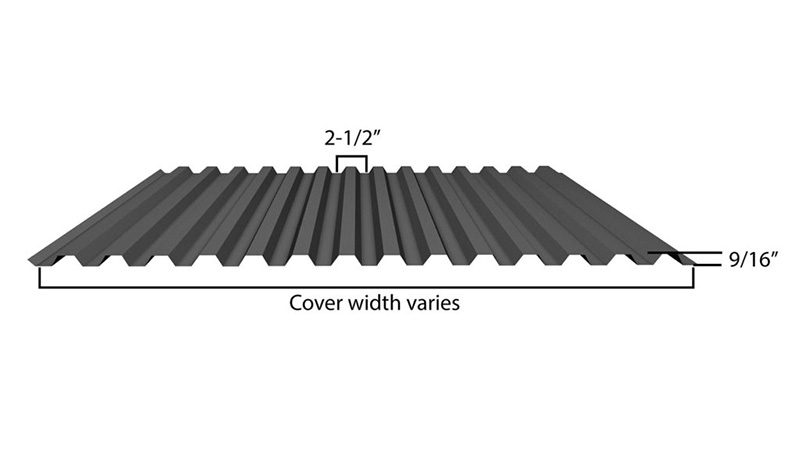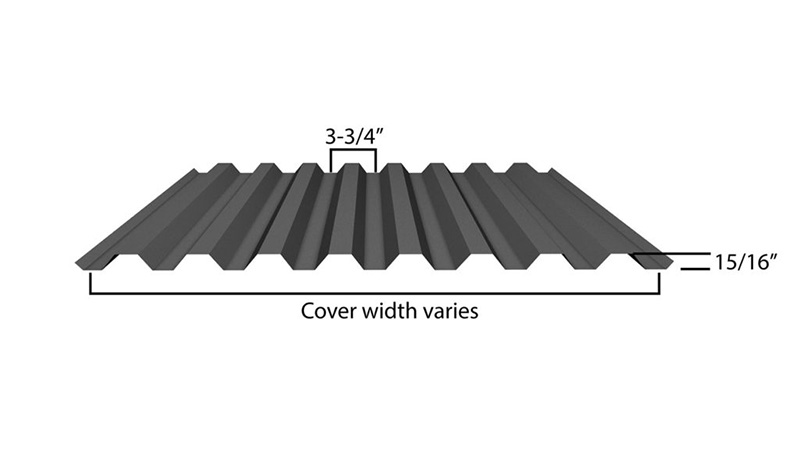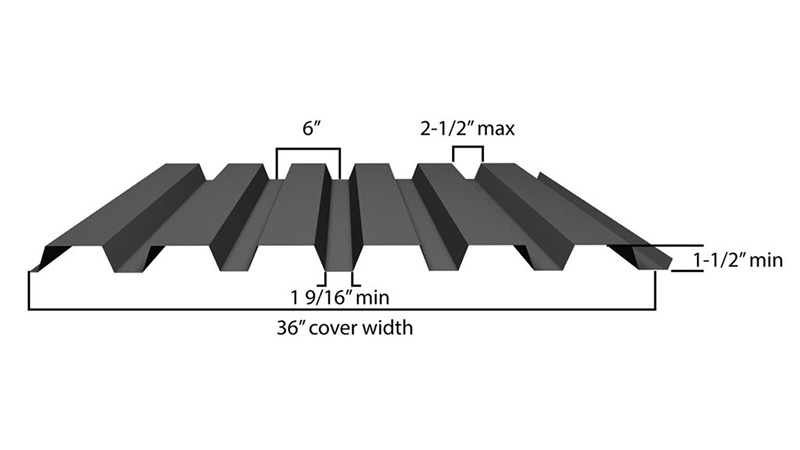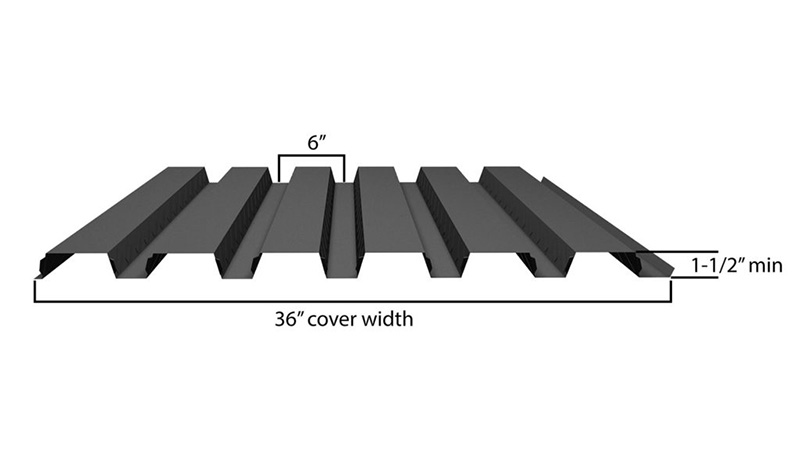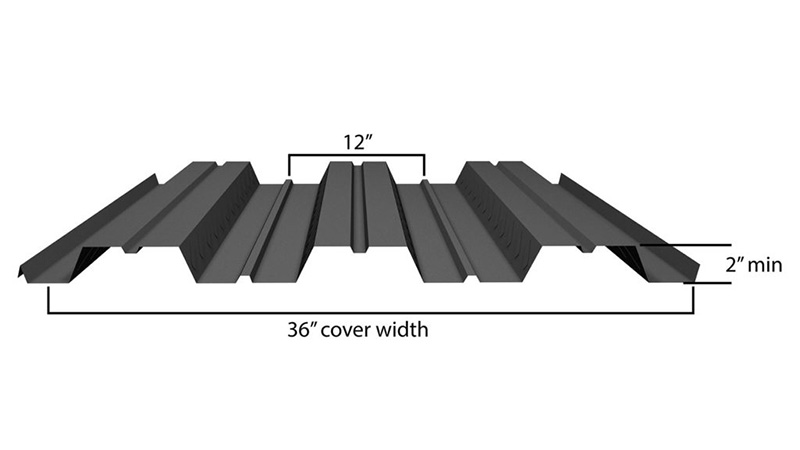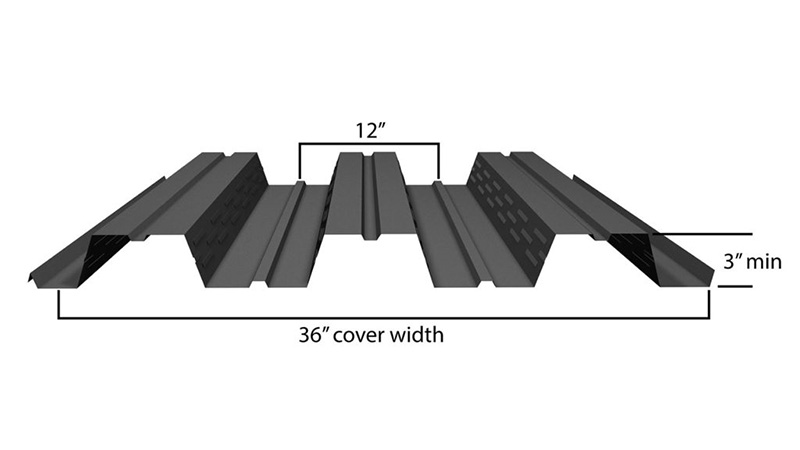Identify Your Steel Deck or Metal Deck
Use these resources to quickly match or identify your existing roof deck.
Follow these three simple steps to identify your steel deck or metal deck:
1. Measure these dimensions on your deck:

2. Find your deck’s dimensions in the table below and match it to the steel roof deck type:
| Type | |||||
|---|---|---|---|---|---|
| B-Deck | |||||
| F-Deck | |||||
| A-Deck | |||||
| N-Deck |
3. Once you’ve determined whether your steel roof deck is type B, A, F, or N, contact us to place your order or get a quote!
Steel deck profiles we stock
Type B roof deck
Type B roof deck, also called “wide-rib roof deck,” is the most common roof deck used today. It has a 1.5” profile and wide ribs, giving it the highest strength-to-weight ratio of any 1.5” profile. This allows B deck to carry higher loads and make longer spans than Types A or F.
Finishes: Primed Gray, G60 Galv. Gauges: 18, 20, 22. Sizes: 36″ × 20’2″, 36″ × 24’2″
Type F roof deck
Type F is a 1.5” profile with an intermediate rib width. Much like A deck, F deck is most often required to repair and replace existing F deck on older buildings. F deck is stronger than A deck, but not as strong as B deck.
Finishes: Primed Gray, G60 Galv. Gauges: 18, 20, 22. Sizes: 36″ × 20’2″, 36″ × 24’2″
Type A roof deck
Type A steel roof deck is a 1.5” profile with a narrow rib that is found on older buildings. We stock this deck type for repairing and replacing existing A deck on older buildings.
Finishes: Primed Gray and G60. Gauges: 22. Sizes: 36″ × 20’2″, 36″ × 24’2″
Type N roof deck
The Type N roof deck, also called “deep-rib roof deck,” has a 3” deep profile which gives it the highest load carrying capacity of the most common roof deck profiles. The added strength of N deck makes it ideal for applications where supporting members need to be spaced further apart, like gymnasiums and other high volume spaces.
Finishes: Primed Gray, G60 Galv. Gauges: 18, 20, 22. Sizes: 36″ × 24’2″
0.6C form deck
0.6C form deck (also called 9/16” form deck) is commonly used in floor construction to support concrete slabs.
Finishes: G60 Galv. Gauges: 22, 26. Sizes: 30″ × 20’3″
15/16″ form deck (1.0C)
1.0C form deck (also called 15/16” form deck) is ideal for heavy-duty applications, as it provides a strong base for forming slabs and serves as a permanent steel base for concrete floor slabs.
Finishes: G60 Galv. Gauges: 20, 22, 26. Sizes: 30″ × 20’3″
1.5″ form deck (1.5C)
1.5C form deck is made from high-strength steel and is used as a permanent base for concrete floor slabs.
Finishes: G60 Galv. Gauges: 18, 20, 22. Sizes: 30″ × 20’3″
1.5″ composite deck (1.5 VLI)
1.5” composite deck acts as a platform before and during concrete placement and is positive reinforcement for the concrete slabs, eliminating wood forms or the need for rebar.
Finishes: G60 Galv. Gauges: 18,20 Sizes: 36″ × 20’0″, 36″ × 24’0″, 36″ × 27’0″
2.0″ composite deck (2.0 VLI)
2.0” composite deck creates a structurally sound and efficient flooring system, acting as a long-lasting and durable support structure for the concrete.
Finishes: G60 Galv. Gauges: 18,20 Sizes: 36″ × 20’0″, 36″ × 24’0″, 36″ × 27’0″
3.0″ composite deck (3.0 VLI)
3.0” composite floor deck requires more concrete than 1.5” or 2.0”, but spans greater distances and is commonly used for pouring concrete slabs.
Finishes: G60 Galv. Gauges: 18,20 Sizes: 36″ × 20’0″, 36″ × 24’0″, 36″ × 27’0″
Get a quote
"*" indicates required fields


